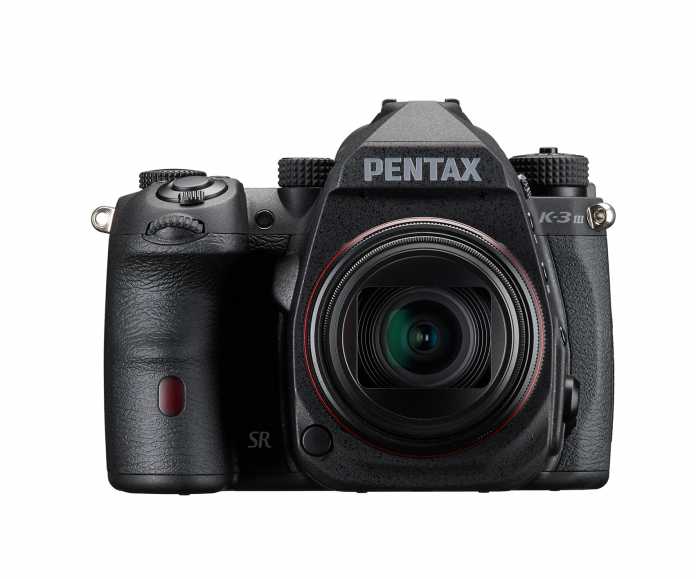Sensors with 14-bit color depth, 60 and more megapixels, more than a dozen dynamic f-stops – why bother with black-and-white photography? Quite simply: Precisely because humans can see colors, the attraction of the monochrome image remains great. It is enough to pick up any demanding magazine. Even elaborately designed advertising is often still black and white. The play with light and shadow, hard contrasts, the concentration on the content, all this is not only “retro” but a means of design. Even in the digital field, every self-respecting photographer has at least one monochrome portrait in their online portfolio.

And while black and white was the cheaper alternative in the days of analogue photography because the films cost less, today it is of course exactly the opposite: the manufacturers charge more for the cameras that cannot handle colors than the colorful counterparts. In the case of niche products, a collector’s surcharge is levied.
Colorless double boom
Two corresponding models were announced this week: First, the Pentax K-3 Mark III Monochrom, in which the body costs 2,500 euros. The color compatible K-3 currently costs around 1700 euros. Of course, it is generally better not to ask Leica about the price at all, but 9450 euros for the M11 monochrome compared to the currently around 8750 euros for the M11 in color are already noticeable. After all: There is fast USB-C and internal memory quadrupled to 256 GB.

It’s – okay, actually always with Leica – not just about having a special camera. There is a real technical advantage of black and white: Since the sensor does not have to read color information, you can do without the usual filter in front of the semiconductor. According to Leica, this brings one f-stop more dynamics. And the Pentax, like the color model, has functions for astrophotography – just all the tools for special applications. And if you want to try it out with an existing device, you don’t even have to spend any money, because there are free trial versions of many black and white plug-ins. The classic is probably the easiest to use Silver Efex.
The archive of the DPReview website will also soon become a classic. Contrary to what was originally planned by the owner Amazon, the many tests of cameras, lenses and other things will not disappear. The site will remain online permanently, but soon no more new content will appear. The remaining employees were still busy after April 10, 2023, which was actually planned as the end time, so there is also a first short test Sample images from the Leica M11 Monochrom.

(Bild: Ricoh Imaging)
Sony sensors for everyone
There should be really new cameras soon with the sensors IMX366AJK (44 megapixels) and IMX455AQK-C (61 megapixels) from Sony Semiconductor. Both are in CMOS design for full format, the higher resolution probably comes from the flagship Alpha 7R V. But Sony is not competing with itself, the company has been offering its sensors for other manufacturers for a long time. And a look at the data sheets shows that there is much more potential in the components than the in-house cameras even exploit. Especially with video, up to 8K resolution and 12-bit color depth, the sensors offer more than previous cameras. Manufacturers like Arri or Red could perhaps use this to make professional film equipment out of it. The price is also professional, because processing such amounts of data requires faster processors and storage systems than in DSLMs.
Maybe Nikon’s Z8 is really coming soon
While the intent behind Sony’s launch is easy to gauge, the same cannot be said for Nikon’s next devices. Only that there should be a bigger announcement in April 2023 can be heard from all corners of the rumor sites. Two lenses for Nikon Z are assumed, and, of course: the long overdue Z8. As early as November 2022, there were a number of plausible assumptions about their specifications after Nikon itself said that the sensor of the Z9 should also be installed in other cameras.
A Z8 is logical mainly because the Z7 II, which costs about half as much, is below the top-of-the-line Z9. In addition, this camera will soon be on the market for two and a half years on the viewfinder hump, so it’s about time for new functions. It remains exciting whether Nikon will also donate the software delicacies of the Z9 to a presumed Z8. This includes, for example, the lossless double digital zoom for videos, which the manufacturer only upgraded with an update.
The game with dates
The fact that Nikon maintains a special information policy was already evident at the beginning of 2023, when two lenses were exhibited at the CES trade fair in January, but instead of price and date there was only a “Coming Soon”. They could then be ordered almost exactly four weeks later. But these are probably the little games that those interested in photography now have to accept as “normal”.
Even the noblest of the nobles are no exception: the Leica M11 Monochrom mentioned at the beginning was announced as available one day after the achromatic Pentax K-3 Mark III, while the Pentax is not scheduled to be delivered until the end of April 2023. These cameras have hardly anything in common in terms of form factor, system characteristics and especially the price. So let’s do it just as absurdly, with a car comparison: it’s as if someone who wants a Tesla Model 3 would rather buy the Porsche Taycan instead. Because it’s coming two weeks earlier.

(huh)


